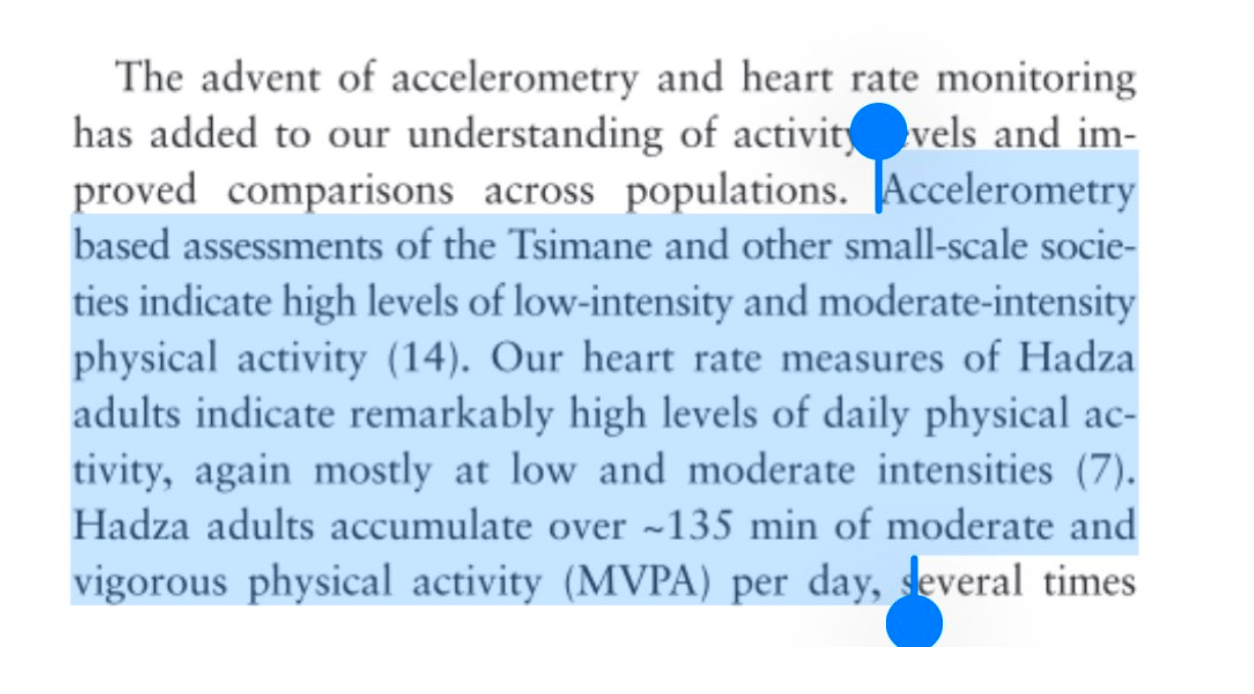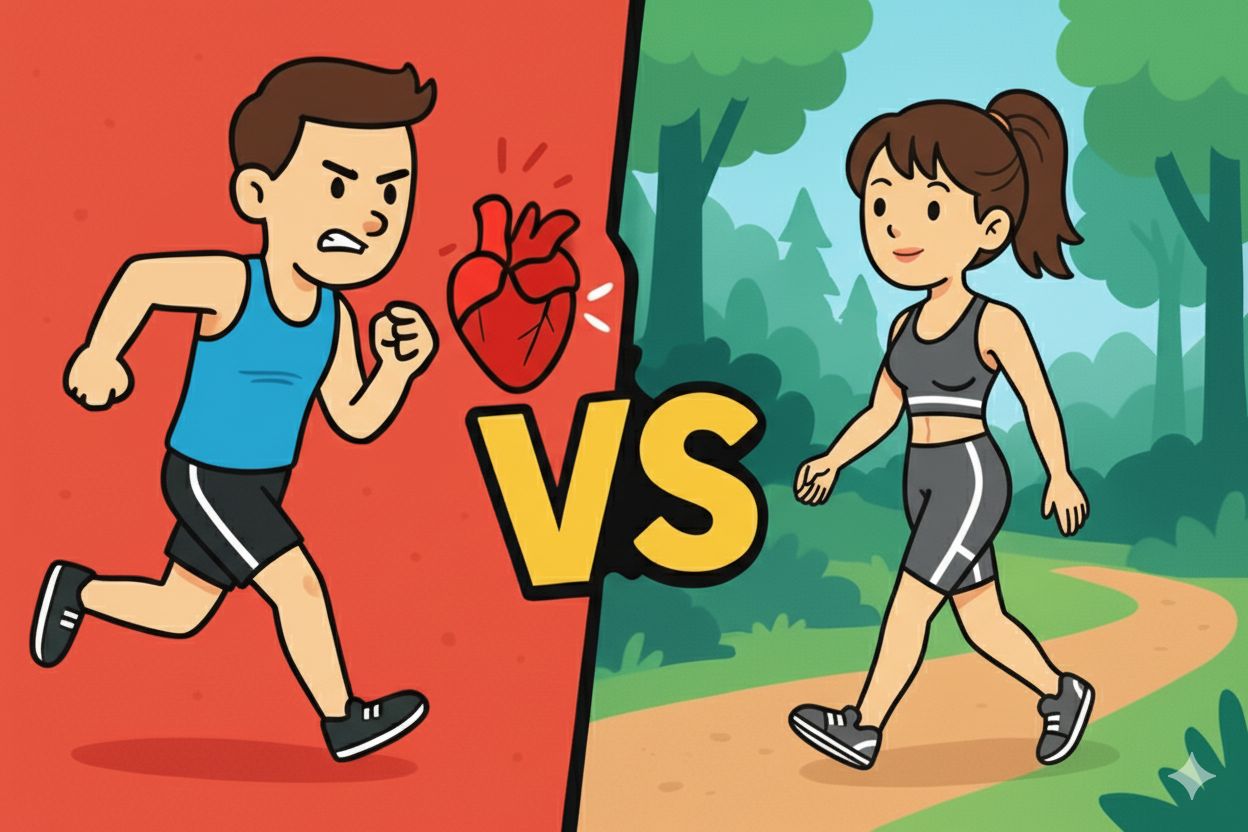- Join the Seed Oil Scout newsletter
- Posts
- Why run when you can walk? 🏃♀️➡️
Why run when you can walk? 🏃♀️➡️


Why run when you can walk? 🏃♀️➡️
"Cardio" redefined?
For decades, health experts have pointed to VO2 Max—a measure of how efficiently your body uses oxygen—as a top predictor of longevity. The common wisdom is that the only way to raise it is through grueling high-intensity interval training (HIIT) or long-distance running.
But what if the path to elite cardiovascular fitness doesn’t require intense suffering? What if the key was a simpler, more sustainable activity? New analysis suggests that walking may be a superior way to build a VO2 Max that promotes a long, healthy life.

Elite Fitness Without the Grind
A landmark 2001 study in Archives of Internal Medicine found a powerful link between high VO2 Max and a lower risk of death from all causes. But there’s a critical detail often overlooked: the data was collected in the 1980s and 90s, well before HIIT became a popular fitness trend.
How did these individuals achieve their life-extending fitness?
The vast majority of their activity was low-to-moderate intensity, with most of it falling below 5.5 METs (a measure of energy expenditure).
The bulk of their exercise was steady movement, not the intense, breathless bursts we associate with VO2 Max training today.
This suggests that the foundational fitness linked to longevity was built not on explosive effort, but on consistent, gentle movement.
The Longevity Secret of Hunter-Gatherers
To see this principle in action, we can look to modern hunter-gatherer and subsistence farming populations, whose lifestyles are detailed in a 2018 paper in Obesity Reviews.
Remarkable Fitness: These groups have exceptionally high VO2 Max levels without a gym membership or a training plan. For men aged 20-40, the average is 56.7, far above their sedentary Western counterparts.
Negligible Heart Disease: In these populations, death from cardiovascular disease is almost nonexistent, even among those over 60.
The "Workout": Their secret is constant motion. The Hadza, for example, accumulate about 135 minutes of moderate physical activity every day, primarily from walking.
They don’t train for a marathon; their daily life is the marathon. This consistent, low-level activity provides profound cardiovascular protection.

How Walking Cleans Your Blood
One of the most powerful benefits of walking is its effect on LDL cholesterol. Think of LDL particles as delivery trucks in your bloodstream. When they linger too long—what a 2020 consensus statement from the European Atherosclerosis Society calls "residence time"—they are more likely to become damaged and contribute to plaque buildup in your arteries.
The Clearance Effect: Aerobic exercise acts like a dispatch system, helping your body clear LDL from circulation more quickly. A 2008 study in Metabolism found that even a single weekly supervised workout improved the LDL residence time in patients with Type 2 diabetes.
Volume is Key: The sheer volume of walking done by subsistence populations—sometimes 12-18 km per day—dramatically shortens LDL residence time, keeping their arteries clear. A 2024 meta-analysis in Life confirmed that longer aerobic exercise programs had bigger effects on lowering LDL.
Less exposure time means less opportunity for cholesterol to cause problems.
The Protocol: Aim for Volume, Not Just Intensity
While HIIT creates a bigger spike in the cellular signals for building fitness in a single session, total volume over the week appears to be more important.
You can only sustain HIIT a couple of times per week. You can walk every day.
Walking vs. HIIT: Walking 15,000 steps a day uses roughly 875 liters of oxygen per week. Two HIIT sessions use only about 250-300 liters. Over the course of a week, walking dwarfs HIIT for total metabolic work.
The Goal:
The Sweet Spot: The biggest jump in longevity comes from moving out of the bottom 25% of cardiovascular fitness into the top 75%. According to a 2018 JAMA study on over 120,000 people, this leap takes the 10-year survival rate from 77% to 96% for middle-aged adults.
Diminishing Returns: Pushing from the top 25% to the elite top 2% only yields a marginal 1% survival benefit, suggesting extreme intensity isn't necessary for longevity.
The Magic Number: Aiming for around 15,000 steps per day puts you in the same activity range as healthy hunter-gatherer populations.
Local Revival makes small batch body care made from 100% organic ingredients sourced from small American farms and suppliers. We love their tallow and honey liquid body wash.
What did you think of this newsletter?
Loved it! ❤️
Seed Oil Scout subscriptions keep this newsletter afloat! Get unlimited access to clean dining globally for a deep discount of $19.99 when you join here

